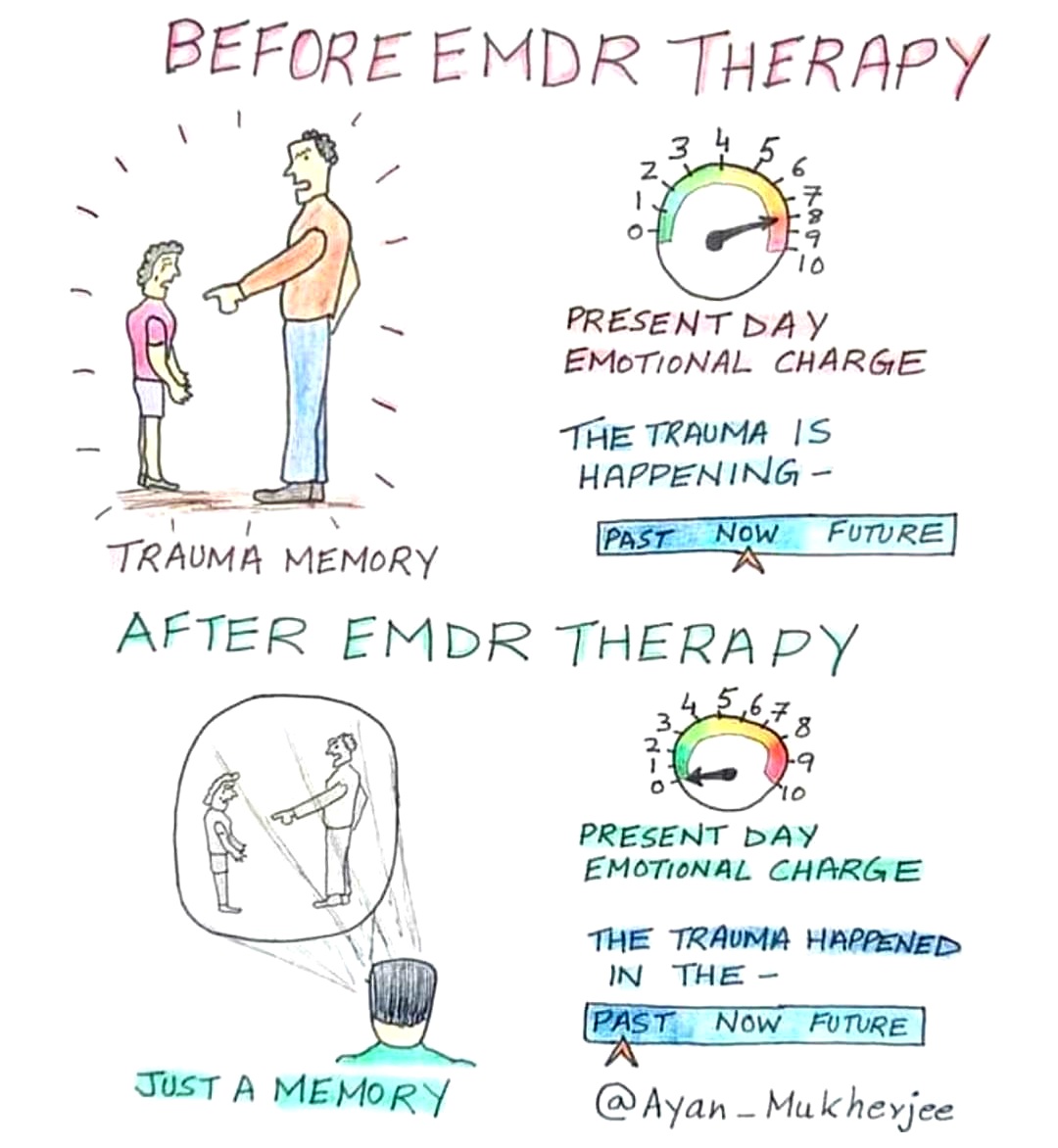Therapy for Acute stress, PTSD,
Complex Trauma and Dissociative Disorders
Life is traumatic. We endure distressing and disturbing experiences as we grow up and find ways to survive, as we’re wired to do so. When our senses are overcome with shock, pain, terror, fear, etc., our brains cannot process all of the stimuli. As a result, the memory of the event is stored differently; it is stored in a fragmented way throughout our bodies, and not stored as other short- and long-term memories are typically stored. When trauma is chronic, we develop more complex survival responses that can later become intrusive and problematic.
Certified Complex Trauma Professional Level II
When working with trauma, a trusting and safe relationship with one’s therapist is one of the most important parts of treatment. It is my priority and focus to establish, maintain, and strengthen a sense of safety from the first contact.
The beginning of therapy as well as the course of your treatment will depend on your history, present circumstances and needs, level of support, and level of functioning.
The work we do in sessions is influenced and guided by ego state therapy, Janina Fisher and structural dissociation theory/treatment, Dynamic Needs Meeting Strategy, Sandra Paulsen, Laurel Parnell, Francine Shapiro, Stephen Porges, Deb Dana, and more. Each person’s trauma history is his or her own, as therapy will be.
What is the ultimate goal?
Trauma survivors can often feel hopeless and alone in their pain and healing. The goal is to work on increasing your “window of tolerance;” the emotional space and experience of relative safety, not in a state of fight or flight. This can take time, consistent effort, and patience. It is possible. When you are able to identify how you feel in the window of tolerance, what sends you out of it, and strategies to return, you will have a greater sense of self-trust and empowerment. With that, you are more equipped for many things in life.
How we go about getting you there will be co-constructed in therapy as we get to know each other, build rapport, and establish safety.
Complex Trauma and Dissociation
Don’t trust anyone who doesn’t have a sense of humor! Laughter is an important part of feeling safe in a relationship; I laugh a lot with my clients despite the intensity of the work.
Complex trauma occurs when someone is exposed to the traumatic events, people, places, etc. over a longer duration of time. Our brains are amazing at adapting to these unfortunate circumstances in order to survive. Symptoms of complex trauma surface later with symptoms like PTSD, but other symptoms like dissociation can be present as well.
Dissociation is something our brain will do to protect us, and we may dissociate in various ways. Dissociation also occurs on a continuum- we all dissociate when doing tasks that don’t require us to think when doing them, or we do them automatically: tying our shoes, taking a shower, driving.
How we address complex trauma and dissociation is unique to each person but involves establishing safety and building a relationship before any other interventions or treatments can be applied.
Download a fact sheet on trauma here (no email or information required; direct link)
For more information on trauma and dissociation: ISSTD - International Society for the Study of Trauma & Dissociation
EMDR Therapy
What does EMDR do? What is the idea?
The goal of EMDR is to stop the past from infiltrating and intruding into the present so that you can respond to what is happening now. When the past is lurking too close to your current circumstances, it’s difficult to determine what feelings are a result of a current event and what feelings are a reaction to the past.
Doing EMDR therapy helps deactivate or neutralize those triggers from past memories so that you are just responding to the current circumstance at the current time.
How do you know if it’s working?
During the process of EMDR, people may experience intense emotions, strong physiological sensations, associations with other memories, and more. Everyone has a different and unique experience, no two are the same.
After completing several EMDR sessions, most people notice the absence of symptoms and behaviors as one of the first outcomes. One client recently referred to EMDR as “magic.” People report being able to notice the lack of reaction at a moment when they would have been triggered before. That helps increase self-confidence and self- trust while also providing tremendous relief.
The results can be amazing and seem magical, while the practice is evidence-based from extensive research. Results vary from person to person. Everyone’s experience with EMDR is different. There is no way to predict how long it will take to work through the traumatic memories, as it depends on many variables.
The goal is to transform negative beliefs formed as a result of the trauma into positive beliefs that help maintain safety, control, and worthiness.
I’ve worked with people who have resolved the following symptoms with emdr
Panic attacks
Involuntary vomiting
Anxiety/shutting down
Parauresis
Not feeling good enough/shame
Fear of getting sick
Obsessive-Compulsive symptoms
Social anxiety and dating
Anxiety triggered by driving/Driving phobia
Recovery from childhood physical, sexual, and emotional abuse
Once you schedule an appointment, we will create a plan that is specific to your symptoms and needs.
EMDR is not recommended for
Pregnancy (with exception; something to discuss)
Chronic dissociation or Dissociative Disorders
People with neurological complications such as migraines (medical clearance needed)
Being in current crisis where one’s environment is unstable, or there is a high risk for instability, upheaval, or chaos. Symptoms that arise after incidents like this are often targeted with EMDR.
For more information on EMDR, these videos may help
Trigger warning: these videos mention examples of trauma and symptoms, with audio and visual stimuli





